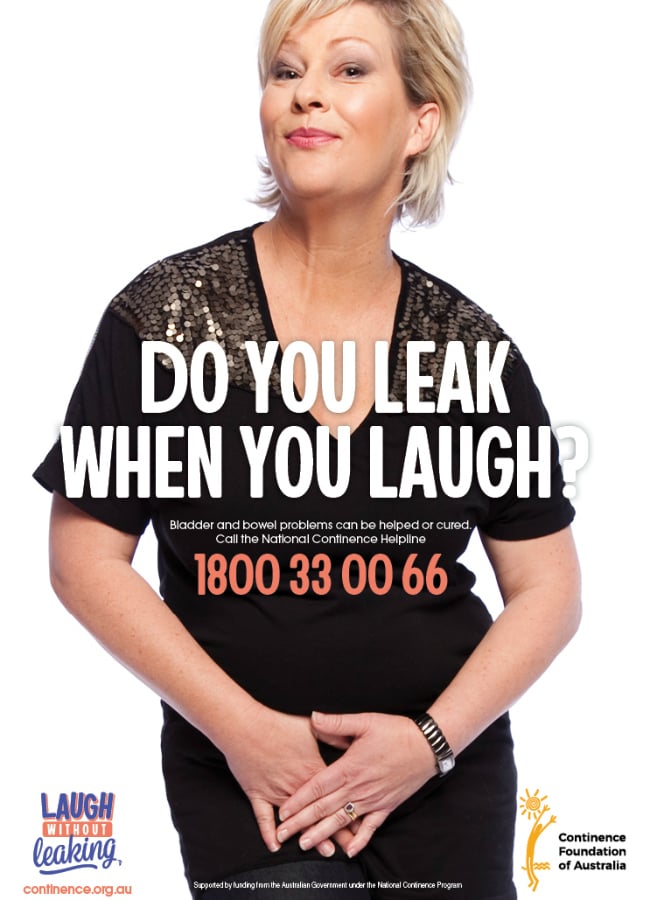

“It was so funny I pissed myself laughing!”
That’s a classic Aussie expression, but for many Australians with incontinence issues they avoid social activities that involve laughter because it’s not just an expression for them. It really happens.
Enter Bev Killick: actress, comedian (aka Crummy Mummy at the Melbourne International Comedy Festival), writer, singer and mother-of-two, Ambassador of the Continence Foundation of Australia…and a self-confessed Chiki Leaker!
Killick heads up the Laugh without Leaking Campaign, using humour to draw attention to the bladder, bowel and pelvic health problems one in four Australians live with every day.
As it would happen, one in five of us wees when we laugh. Bev, also known as the Comedy Queen of Continence, refuses to submit to the stigma associated with the condition.
“I have no shame about it,” she tells Mamamia, and it’s clear that’s true as she uses her raw and honest humour to reframe her daily incontinence challenges as part of her hilarious onstage comedy routine.
Offstage, Bev maintains the same open dialogue, and admits she has struggled with continence issues since she was a child.
“I always had a weak bladder, but I had to deal with it. I can remember being in class and sitting next to a friend who made me laugh so much I had to cross my legs and hold on and I couldn’t so I wet myself – to the point there was a puddle on the floor!” she tells us.



Top Comments
I'm so pleased that there is no mention of using pelvic mesh to fix urinary incontinence! I had very minimal stress urinary incontinence and was implanted with this polypropylene mesh which caused all sorts of problems. After 14 years of pain and illness, I finally had it removed when it had eroded through my vaginal wall and became chronically infected. The subsequent surgery has left me with neuralgic and myalgic pain and a large incisional hernia (of which the surgeons want to fix with more mesh). If your doctor suggests mesh, sling, tape or whatever they want to call it, please please please decline!